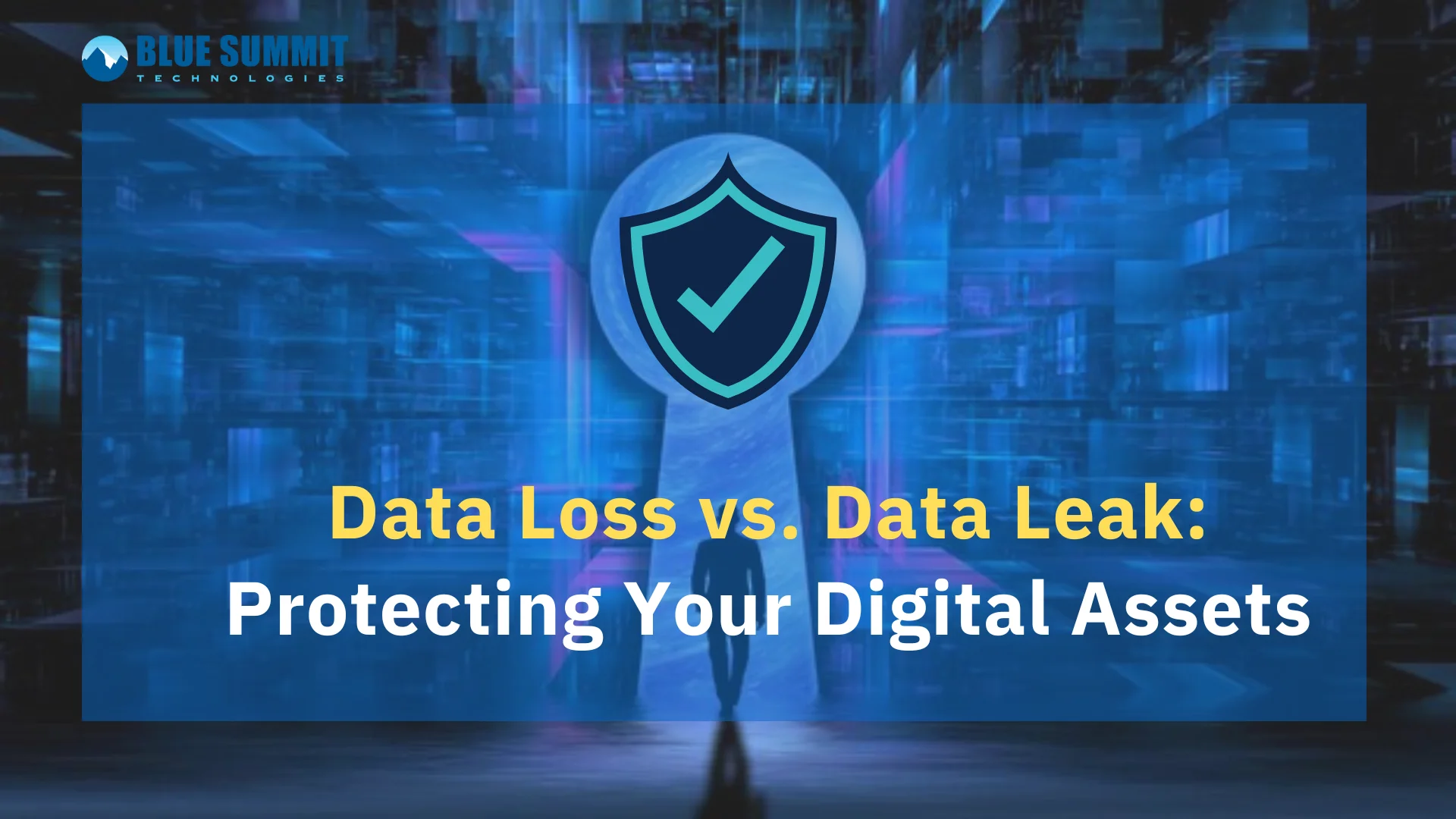
Posted on Thursday, Jul 13th, 2023
Data Loss vs. Data Leak: The Varied Consequences
In today's interconnected world, data security has become a paramount concern for individuals and organizations alike. The terms "data loss" and "data leak" are often used interchangeably, but they represent distinct and significant cybersecurity risks. Understanding the concept data loss vs. data leak is essential for implementing robust data protection strategies. In this blog post, we will explore the key characteristics of data loss and data leaks, shedding light on the crucial disparities between them.
Data Loss: Protecting Your Valuable Assets
Data loss refers to the unintentional or accidental destruction or disappearance of data, rendering it inaccessible or permanently deleted. This can occur due to various factors, including hardware failure, software corruption, human error, or natural disasters. While data loss can have severe consequences for individuals and businesses, it is typically an internal issue that occurs within the confines of an organization's own systems.Data loss can be manifested in different forms, such as:
a) Hard Drive Failure
When a storage device, such as a hard drive or solid-state drive (SSD), becomes inoperable, it can lead to the loss of all the data stored on it.b) Accidental Deletion
Human error, such as mistakenly deleting critical files or folders, can result in the permanent loss of valuable data.c) Software or System Corruption
Malfunctioning software or system errors can corrupt data, making it unreadable or unusable.To protect against data loss, consider the following preventive measures:
I. Regular Data Backups
Implement a robust backup strategy to create duplicates of your data, preferably stored on separate devices or in offsite locations.
II. Redundant Storage Systems
Employ redundant storage solutions like RAID (Redundant Array of Independent Disks) to minimize the risk of data loss due to hardware failures.
III. Disaster Recovery Plan
Develop a comprehensive disaster recovery plan that outlines steps to recover data in the event of a catastrophic event.
Data Leak: Protecting Confidential Information
Unlike data loss, a data leak involves the unauthorized exposure or disclosure of sensitive or confidential information to an external party. Data leaks often occur due to security breaches, where cybercriminals gain unauthorized access to a network or system and extract valuable data for malicious purposes. Key aspects of data leaks include:a) Breach of Security
Data leaks are typically a result of security vulnerabilities in an organization's network infrastructure, software, or human error, which allow unauthorized access to sensitive data.b) Intentional or Malicious Actions
Data leaks can also be caused by deliberate actions from insiders, such as employees or contractors, who intentionally share or sell confidential data for personal gain.c) Loss of Control
When a data leak occurs, organizations lose control over their data, which can lead to severe reputational damage, financial loss, and potential legal consequences.To prevent data leaks, consider implementing the following security measures:
I. Strong Access Controls
Implement stringent access controls to limit the exposure of sensitive data to authorized individuals only.
II. Encryption
Utilize encryption techniques to protect data both at rest and in transit, making it unreadable to unauthorized users.
III. Employee Training
Educate employees on cybersecurity best practices, emphasizing the importance of data protection, password hygiene, and recognizing potential phishing attempts.
IV. Incident Response Plan
Develop a comprehensive incident response plan to address data leaks promptly, including steps to mitigate the impact and communicate with stakeholders.
Regular security audits and incident response plans can also help detect and mitigate data leaks promptly.
Data Loss vs. Data Leak
Data Loss
1. Data loss refers to the unintentional or accidental destruction, disappearance, or unavailability of data.2. It is typically an internal issue that occurs within an organization's own systems.
3. Data loss can result from hardware failure, software corruption, human error, or natural disasters.
4. It is often a result of technical failures, such as hard drive crashes or software errors.
5. Data loss is usually unintentional and does not involve the deliberate exposure of data to unauthorized parties.
6. Examples of data loss include hard drive failures, accidental deletions, and software or system corruptions.
7. Data loss can lead to the permanent loss of valuable data and operational disruptions within an organization.
8. Mitigation strategies for data loss involve regular data backups, redundant storage systems, and robust disaster recovery plans.
Data Leak
1. A data leak involves the unauthorized exposure or disclosure of sensitive or confidential information to external parties.2. It often occurs as a result of security breaches, where cybercriminals gain unauthorized access to a network or system.
3. Data leaks can also be caused by deliberate actions from insiders, such as employees or contractors, who intentionally share or sell confidential data.
4. Data leaks typically involve intentional or malicious activities aimed at extracting sensitive information.
5. Examples of data leaks include hacking incidents, insider threats, or accidental exposure of confidential data.
6. Data leaks can result in reputational damage, financial loss, legal consequences, and loss of customer trust.
7. Preventive measures for data leaks include encryption, access controls, intrusion detection systems, employee training, security audits, and incident response plans.
8. Detecting and mitigating data leaks promptly is crucial to minimize the potential damage caused by unauthorized data exposure.
Conclusion
Data loss and data leaks may sound similar, but they represent distinct cybersecurity risks. Data loss refers to the accidental or unintentional destruction or unavailability of data, usually within an organization's own systems. On the other hand, data leaks involve the unauthorized exposure of sensitive information to external parties, often resulting from security breaches or intentional actions.Understanding the differences between these two concepts is vital for organizations to develop comprehensive data protection strategies that safeguard their valuable assets and sensitive information. By implementing appropriate security measures and adhering to best practices, organizations can minimize the risk of both data loss and data leaks, ensuring the integrity, confidentiality, and availability of their data.
For comprehensive information on cybersecurity and its range of services, we invite you to visit our official website. Our team is available to address any inquiries you may have. Feel free to reach out to us with your queries, and we will be delighted to assist you.
Blue Summit has collaborated with OdiTek Solutions, a frontline custom software development company. It is trusted for its high service quality and delivery consistency. Visit our partner's page to720day and get your business streamlined.
REFER TO OTHER RELEVANT CONTENTS

SQL Server Analysis Services (SASS) Development
For business intelligence applications, Microsoft SQL Server 2005 Analysis Services (SSAS) provides online analytical processing (OLAP) and data mining functionality. By allowing you to design, create, and manage multidimensional structures that contain data aggregated from other data sources like relational databases, Analysis Services provides support...
read more







